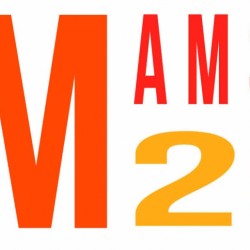Last week I was lucky enough to attend the 2:AM Conference in Amsterdam. The conference was focused on altmetrics–a type of metric that is typically calculated based on scholarly communication events captured in online contexts (e.g., events in Twitter, Mendeley, Wikipedia, etc). For some time I’ve been critical of the term “altmetrics” because I had taken it to mean “alternative to citations,” but after this conference I’m not so confident in my previous position. Altmetrics is an umbrella term that we use to help describe the type of research we are doing (at least those of us that research these things), it is a buzzword that others use to talk about scholarly communication in online contexts, it is a term that the media has used, it is currently used in organizations, libraries, universities, and companies to promote scientific work, and it has become a term that somehow represents the potential for measuring impact outside of the academic machine (other than scientific impact). While it has been criticised many times in the past for being the wrong term, I am not sure there is a more appropriate term… and that is fine. We have had suggestions including social media metrics (Haustein, Larivière, Thelwall, Amyot, & Peters, 2014), complimetrics (complimentary metrics) (Adie, 2014), influmetrics (influence metrics) (Cronin & Weaver, 1995; Rousseau & Ye, 2013), and more traditionally webometrics (Almind & Ingwersen, 1997), to name just a few, but these do not seem to be any better and also do not seem to possess that something that “alt”metrics seems to possess.
I dabble in linguistics and I believe that words are of vital importance to our ability to understand and discuss the same phenomenon (especially in science), which is why I was so adamant that “altmetrics” was the wrong term to be using. But then I took another look at the altmetrics manifesto (the 5th anniversary of this important object was celebrated at the conference) and reevaluated my own position based on my accumulated knowledge in the field, what I learned at this conference, and a closer inspection of the manifesto to come to the realization that altmetrics is fine when you think of it as an “alternative means of measuring scholarly communication.”
The conference venue was great as we were housed at the Amsterdam Science Park, a sprawling complex on the eastern side of Amsterdam. There were quite a few attendees and the presentations and workshop were informative and thought-provoking. Many of the primary data providers, publishing companies, metrics providers, and others in this field sent representatives including Jason Priem (impactstory.org), Euan Adie (altmetric.com), William Gunn (mendeley.com), Greg Gordon (ssrn.com), Martin Fenner (niso.org), and Geoff Bilder (crossref.org). In addition, the four authors of the altmetrics manifesto were in attendance to celebrate its 5th anniversary– Jason Priem, Dario Taraborelli, Paul Groth, and Cameron Neylon. I was able to speak with both Jason and Cameron and they were engaging, down to earth people who are great scholars and excited by the future of scholarly communication (I wasn’t able to speak with Paul or Dario at such length).
What I gleaned from 2:AM was that there was an ongoing discussion from multiple perspectives taking place regarding the ability for altmetrics to measure impact, the types of impact there might be for scholarly communication, and the importance of trust when considering the reasons behind altmeteric events. In addition, I am looking forward to be a part of a group (formed at the”theories” conference breakout session) that will write a white paper describing and defining common terms used in altmetric research for the purpose of allowing others outside of our community to understand and contribute to the ongoing work in the field. I also learned that many in the field had read our book chapter (arXiv:1502.05701) on applying citation and social theories to the understanding of altmetric events–they were very supportive of our efforts to put forth this first attempt at developing a framework for understanding altmetric events. Yet we all know that much more work needs to be done and hopefully this white paper will be a nice step in that direction.
What I also learned from listening to Jason Priem, Dario Taraborelli, Paul Groth, and Cameron Neylon was that our group has somewhat ignored the important component of the manifesto, which is talking about altmetric events as a type of “filters” for scholarly research and communication:
No one can read everything. We rely on filters to make sense of the scholarly literature, but the narrow, traditional filters are being swamped. However, the growth of new, online scholarly tools allows us to make new filters; these altmetrics reflect the broad, rapid impact of scholarship in this burgeoning ecosystem. We call for more tools and research based on altmetrics. (Priem, Taraborelli, Groth & Neylon, para 1, 2010)
This is an important aspect that I too simply took for granted and something I need to reflect on as my understanding of these phenomena continue to grow and change.
References
Priem, J., Taraborelli, D., Groth, P., & Neylon, C. (2010). Altmetrics: A manifesto. October 26, 2010. Retrieved from http://altmetrics.org/manifesto

